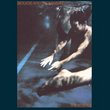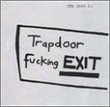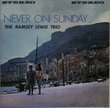| All Artists: Siouxsie & Banshees Title: Join Hands Members Wishing: 8 Total Copies: 0 Label: Geffen Records Release Date: 8/25/1992 Genres: Alternative Rock, Pop, Rock Styles: Hardcore & Punk, New Wave & Post-Punk Number of Discs: 1 SwapaCD Credits: 1 UPC: 720642404720 |
Search - Siouxsie & Banshees :: Join Hands
 | Siouxsie & Banshees Join Hands Genres: Alternative Rock, Pop, Rock
1979 album for the British punk/new wave icons. 8 tracks. |
Larger Image |
CD DetailsSynopsis
Album Description 1979 album for the British punk/new wave icons. 8 tracks. Similar CDs
|
CD ReviewsSophomore slump personified B. G. Shultz | Rockwall, TX USA | 08/30/2004 (3 out of 5 stars) "Everybody who knows anything about Siouxsie and the Banshees knows that their debut album, "The Scream", was a pivotal album, probably the point where one form of punk moved out of the house and set up its own residence (post-punk). "Join Hands" is a sometimes great, but mostly dismal, follow-up; it's the sound of a band falling apart (which they very nearly did on the following tour) and unsure how to proceed. It has its moments, notably the single "Playground Twist", which explores the dark impulses of little kids, and "Placebo Effect", which sounds to me like a medical nightmare of some kind. Of course, the stand-out track is "Icon", a powerful song that would've fit right in on the first album. "Regal Zone", "Poppy Day", "Premature Burial"- they are not without merit, but not especially catchy either. And "Mother/Oh Mein Papa" is cool in that twisted lullaby way. The problem I have with this album (and it is a considerable problem, clocking in as it does at a whopping 14+ minutes), is this mangled piece of wreckage called "The Lord's Prayer". Yes, yes, I'm aware of its historical significance, I know the band played it at the 100 Club as their first performance, la de da. Still, it basically rots. It is way too long, monotonous, totally lacking in atmosphere, and absolutely stupid lyrically. I don't care if this song set foot on the moon and played chess with E.T., I cannot pat the band on the back for it. It does, however, succeed in making the mediocre tracks on the album seem great in comparison. I read a book about the Banshees once, in which they basically admitted that "The Lord's Prayer" was a blunder. They immediately sensed that it captured none of the power that it generated on stage. If they're willing to admit how awful it is, why can't others?" Brilliant ideas marred by some bad production V. E. Beard | Nottingham, UK | 04/30/2005 (4 out of 5 stars) ""Join Hands" Siouxsie And The Banshees Rock, Punk, Alternative Pop/Rock, Post-Punk, British Punk 1979 This concept second album is largely considered to be their worst. A nice experiment, it is their most gothic yet has a similar sound to their debut, as it features the same line-up as their widely acclaimed "The Scream": Siouxsie, Steve Severin, John McKay & Kenny Morris (the latter two who quit just before the 1979 tour). The production (courtesy of Nils Stevenson & Mike Stavrou) is probably everyone's greatest complaint with this album. The cold, oppressive and concrete noise scratches the speakers mercilessly. Siouxsie's voice can also sound toneless at times. They had wanted Marc Bolan to produce, but this fell through also. However, it really isn't as bad as general opinion will have you believe. It never really misses, has a few good songs and one of their great songs as well. If you're in the right mood, it can really shine, tracks 4-7 particularly. Siouxsie also looks quite pretty in the inner sleeve illustration. The cover art (four soldiers) is from a photograph of Guards Memorial, Horse Guards Parade, London. There are actually five in reality, though. They originally wanted to incorporate a picture of two children getting married, but this fell through after difficulties tracing the copyright owner. They then wanted to have the four soldiers embossed, but it was rushed so they were printed instead. The obvious theme of the album is not goth, but has war and even more specifically, burial, overtones. Church bells in "Poppy Day" open the album as the space-rock guitar opening increases in volume until Siouxsie sing-recites the poem "In Flanders Field" written by a Canadian soldier during the First World War. Their aim was to fill the Remembrance Sunday 2 minutes silence with noise. It is not particularly enjoyable, but definitely isn't terrible. The tune is quite memorable. The good but slightly unmemorable "Regal Zone" is where they start to get scary, and was influenced by a news reporting on the war in Iran. All instruments are used to quite good effect here, and they seem to have achieved the sound they were going for. "Placebo Effect" has a catchier of tunes, and perhaps could have fit in on "The Scream" generally comfortably. "Icon" is the first great song on the record. The opening is terrific, the verses and chorus in particular are very memorable with wonderful lyrics. Siouxsie's voice is in better shape on this one. Polydor obviously saw the potential in this song somewhat, as it was edited and remixed for a single, yet never released The extremely creepy organ opening to "Premature Burial" introduces another great song on this mostly mediocre album. And then it gets going, the eerie sense of foreboding recurrent through the song the album title was also taken from a lyric in this song. The only single, and an early classic, "Playground Twist" is the standout of the album. The sinister bells, roaring guitars and pounding percussion make this tower over you and everything else on "Join Hands", making it sound like it was recorded in a different session to the other more mediocre tracks (although it wasn't). Something else that gives it such credibility is that is doesn't even sound like something from "The Scream". If all of "Join Hands" was of the same calibre and had as much energy as this, "Join Hands" would have most definitely faired better. It was written about the cruelty of children and was performed on Top Of The Pops as their debut performance. The cover art for the record sleeve was painted by a disabled child in Kuwait. The schizophrenic, creepiest, most different and most experimental song on the album is a mixture of their own composition "Mother" and an old German music box song "Oh Mein Papa". The clinking music box plays the same tune repetitively as Siouxsie sings one side of a child's mind at the same time as the other side. The different perspectives take turns in overlapping each other to a magnificent effect. Whilst you're trying to concentrate on both lyrics (with lines like "downstairs I don't know if it's the springs in her bed or her joints I hear creaking overhead" and gasps of "Oh Mother!"), a dementing guitar creaks up gradually like Mother's bones until it is the primary sound you hear. At the end, you can hear her singing "Oh mein Papa, to me he is so beautiful...". Siouxsie has said: "It's very close to home. It's personal but I'm not hung up about it. I've deeply loved my mother. I've gone out and got pissed with her, called her by her first name. But at times she's been this disapproving figure and I've hated her I think" "The Lord's Prayer" was first performed by Siouxsie And The Banshee's first incarnation (which included (though not at the same time) the names Siouxsie Sioux, Steven Severin, Marco Pirroni, Sid Vicious, Dixon, PT Fenton, Simone, John McKay & Kenny Morris) in 1976 at the 100 Club. They played a 20 minute version of 'The Lord's Prayer' with 'Twist & Shout' & 'Knocking on Heaven's Door' incorporated. Parts were also inspired by "The Benefactor", a short horror story by Walter Winward. They were described as "unbearable and pure noise for anyone's ears." They wanted to play longer, Siouxsie said: "It was a mistake, we were going to keep playing until we were thrown off (the stage), but we got bored before the audience did! I don't know why I did it, I just knew I wanted to before I was 21, I've always gone around being looked at so I thought perhaps I should go on stage and exploit it". The version here is widely similar, containing such improvised lyrics: "You`ll never get to heaven, not even if you`re good" and "I float like a butterfly, I sting like a bee" (quoting God), singing something in Latin as well as many random yelps, scathing laughs and weird yodels. Make your decision on whether you really want to listen to it or not. This is a dense, macabre, scary, gothic album. Hardcore Banshees fans will obviously have it and I wouldn't advise starting a collection of their work with it. Give it a try though, as it's usually cheaper easier to find than "Once Upon A Time: The Singles" which also features the wonderful "Playground Twist". There are other magical moments on here, but the inclusion of their non-LP single "Staircase (The Mystery)" would have been wise. A fact about this is that the video was partly inspired by the murder of private eye Arbogast in the 1960 Alfred Hitchcock movie "Psycho". Also, Kenny had read about the case of multiple personality victim Christine Sizemore (who was the subject of later songs "Eve White/Eve Black" and "Christine") and thought that a picture of her at 10 years old with her eyes and mouth blacked out would have been a good single cover. They eventually decided the song and Christine were not related so stills from the video were used on the sleeve instead." In Defense of The Lord's Prayer... Reine Slater | London | 01/01/2004 (5 out of 5 stars) "Before I launch into any other sort of review, I feel this needs to be stated with regard to the last track on this album:Fans ought to realise that, without their earsplitting rendition of "The Lord's Prayer", there would be no Siouxsie and the Banshees. If the Bromley Contingent hadn't decided to hop up on stage and pelt the audience with a 20 minute wall of noise, there would be no better albums to compare "Join Hands" with. That said, the track included in this follow up to the Banshees' debut should be regarded as a necessary piece of the band's history and fans should be grateful that Siouxsie decided to recreate the whole thing for record and distribution. Seeking to purchase Banshee records already shows distinct originality and acquired taste on the part of the listener so why shy away from the one song that launched two decades of innovation?That said, this is a brilliant follow up to "The Scream" for several reasons. The music, the sound, is not the same and why should it be? Second albums are difficult because, while most listeners expect identical music, the band is constantly seeking out new methods of expression. This album flirts with disaster in an overpowering wash of bleak and otherwise desolate set of tracks, but I believe it manages to skirt the rim of oblivion quite nicely. Instead, listeners are rewarded with a journey into the untamed goth sound (even more chaotic that in "The Scream") from which the more polished "Juju" would later emerge. The best part about the Banshees is that each album is distinctive, a testament to the flexibility and metamorphosis of the band. Perhaps it is not in every listener to embrace all aspects of each album. But, the least we can do is acknowledge the fact that all aspects can in fact be embraced."
|

 Track Listings (8) - Disc #1
Track Listings (8) - Disc #1








